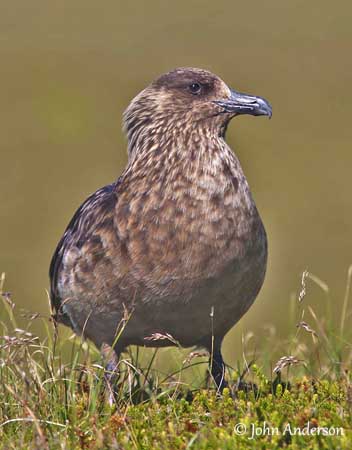
Text by Nicole Bouglouan
Photographers:
John Anderson
John Anderson Photo Galleries
Steve Garvie
RAINBIRDER Photo galleries
Tom Grey
Tom Grey's Bird Pictures
Patrick Ingremeau
TAMANDUA
Eduardo Andrés Jordan
MIS AVES – AVES DE ARGENTINA
Tom Merigan
Tom Merigan’s Photo Galleries
Ingo Waschkies
Bird Photography
Philippe and Aline Wolfer
OISEAUX D'ARGENTINE
Sources:
SKUAS AND JAEGERS by Klaus Malling Olsen and Hans Larsson - Pica Press Sussex,
ISBN: 1873403461
HANDBOOK OF THE BIRDS OF THE WORLD Vol 3 by Josep del Hoyo-Andrew Elliott-Jordi Sargatal - Lynx Edicions - ISBN : 8487334202
BirdLife International (BirdLife International)
CREAGUS@Monterey Bay (Don Roberson)
SORA Searchable Ornithological Research Archive (Blair O. Wolf)
Wikipedia, the free encyclopaedia
FAMILY STERCORARIIDAE
Skuas and Jaegers
This family includes seven species of genus Stercorarius within the large Order Charadriiformes. These seven species are divided into two groups.
The first group includes the skuas of former genus Catharacta, today genus Stercorarius, which are the largest species. We can find here the Great Skua (Stercorarius skua), the Brown Skua (Stercorarius antarcticus), the Chilean Skua (Stercorarius chilensis) and the South Polar Skua (Stercorarius maccormicki).
Adults have a few plumage variations while juveniles lack neat patterning and have almost uniform colour. Except the Great Skua which breeds in the North Atlantic and migrates off Iberia in winter, the three other skuas breed in the Southern hemisphere and stay close their breeding areas during winter.

Stercorarius skua
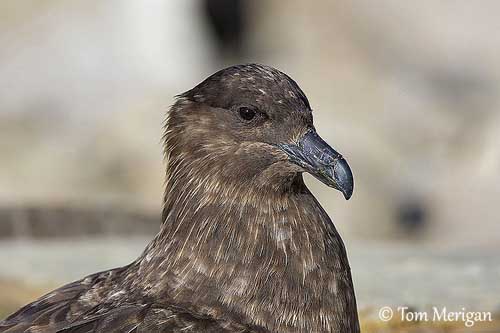
Stercorarius antarcticus
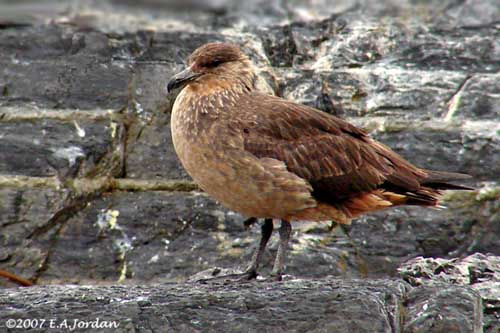
Stercorarius chilensis
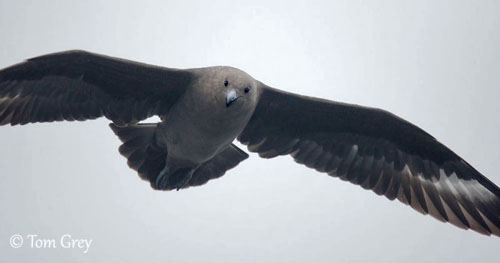
Stercorarius maccormicki
The second group includes three smaller species, the Pomarine Skua or Jaeger (Stercorarius pomarinus), the Arctic Skua or Parasitic Jaeger (Stercorarius parasiticus) and the Long-tailed Skua or Jaeger (Stercorarius longicaudus).
In addition to be smaller than previous species, they have different breeding and non-breeding plumages, and their juveniles show scaled upperparts and barred underparts. They breed in the Northern Hemisphere and travel long-distances to reach their tropical wintering grounds.
The alternative name “jaeger” instead “skua” is used in America for these three species.
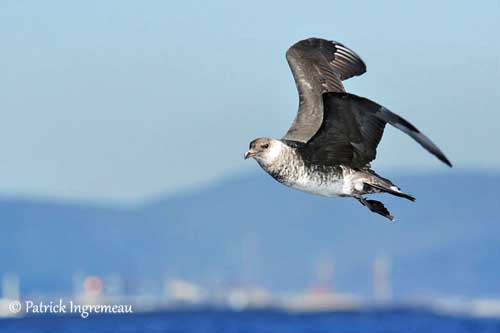
Stercorarius pomarinus
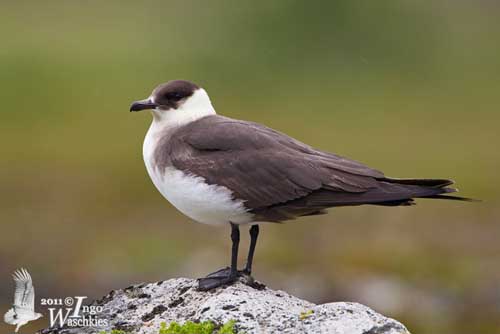
Arctic Skua or Parasitic Jaeger
Stercorarius parasiticus
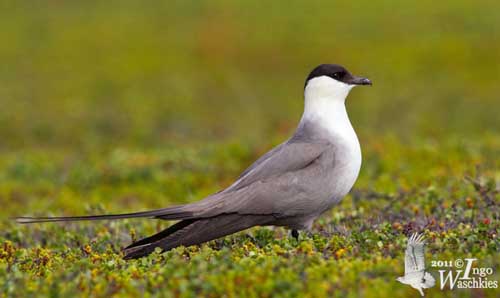
Stercorarius longicaudus
The large skuas of the first group are mainly brown with a strong, dark hooked bill. The wings show conspicuous white patches on both upper and underwing. Female is larger and more terrestrial than male. She feeds mainly on invertebrates and berries, whereas the male takes more fish.
In breeding plumage, the large skuas have a broad necklace formed with pale yellowish streaks on head, neck sides, hindneck and sides of breast, but the latter is not always included in this pattern. The juveniles are duller and paler than adults.
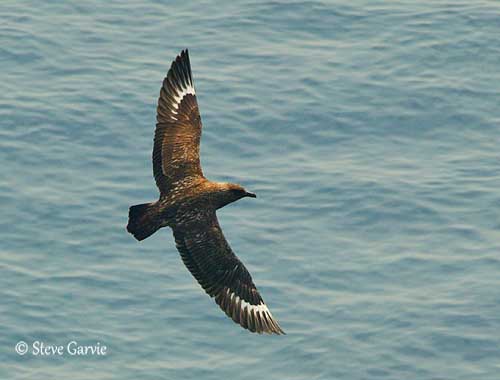
Stercorarius skua
However, among the four large skuas, one species, the South Polar Skua is slightly different. This one has yellow head streaking all year round, and adults are very pale, bleached and worn after the breeding season, much more than in the three other species. It may show very pale underparts indicating that is feeds more by direct fishing. The other species feed mainly by kleptoparasitism and have much darker upperparts.
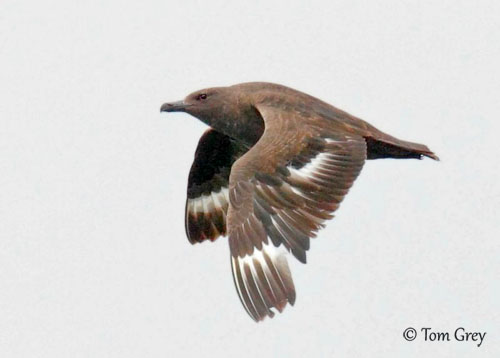
Stercorarius maccormicki
The three skuas of the second group have longer tail and more pointed wings. The white wing patch is only a diffuse pale area at primary bases.
There are many variations of plumage with pale, intermediate and dark morphs in Arctic Skua or Parasitic Jaeger, but intermediate is fairly uncommon. The dark morph is more reported in the coastal populations of the southern part of the range, whereas the birds breeding in tundra are mainly pale-morph skuas.
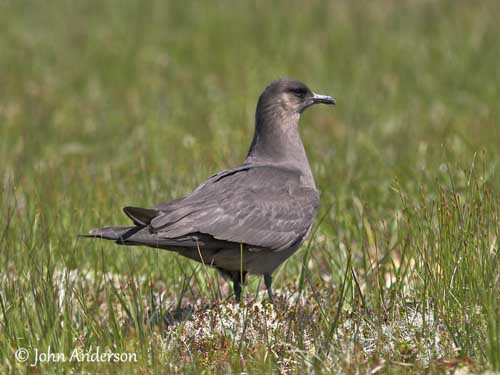
The Pomarine Skua or Jaeger does too, but both dark and mainly intermediate morphs are the rarest.
The Long-tailed Skua or Jaeger is monomorphic with only pale morph. A darker morph may occur but it is very rare, although 1/3 juveniles develop dark plumage before to get the pale adult plumage.
The juveniles of the three species may vary greatly, with very pale head or almost blackish birds. The central rectrices are shorter and broader, and on upperparts and body, feathers have distinct pale edges. Usually, they need about four years to gain the full adult plumage.

Skuas and jaegers regularly perform kleptoparasitism, stealing food from other seabirds. They are called “the raptors of the seas”. They harass their victims in aerial pursuit, and make them regurgitate or drop their food.
However, piracy may sometimes lead to genuine attack. The Pomarine Skua or Jaeger and the four large skuas may really attack their victims, by forcing them to fall down into the water where they are sometimes killed. The Arctic Skua or Parasitic Jaeger takes almost all its food by stealing it from other seabirds.
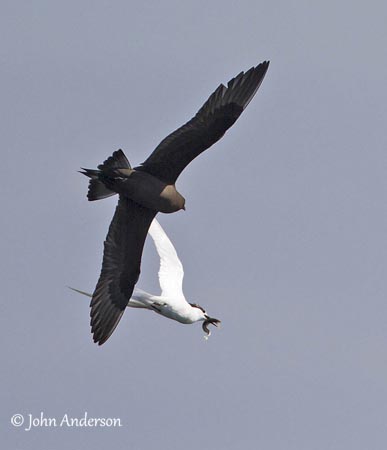

Piracy and kleptoparasitism are the main ways to feed during winter, when skuas and jaegers are in their wintering areas and often at sea. But during the breeding season, when the birds are on land, they depend more on terrestrial animals and berries than fish.
The Pomarine Skua or Jaeger depends on lemmings and is a very specialized predator. But as lemming numbers are not stable, it does not breed if they are not sufficient, and wanders around the arctic tundra in search of sites with good food sources. However, berries and insects are also taken.
In the same way, the Long-tailed Skua or Jaeger depends on lemmings to a lesser degree and is able to take other types of food when breeding.
According to the nest-site, they may kill young birds in the close nesting-colonies of seabirds, penguin eggs and chicks, fish, rodents and small mammals, and also take offal and carrion. They may sometimes follow trawlers and fishing-boats too.
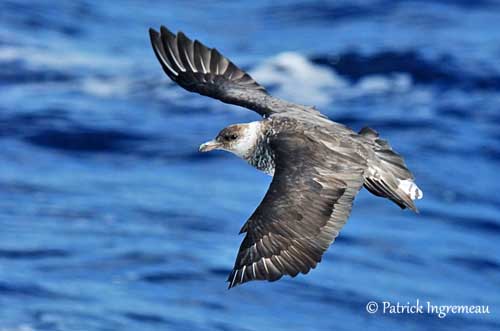
Stercorarius pomarinus
As the Pomarine Skua or Jaeger depends on lemmings for breeding, it does not exhibit mate and site fidelity. But the other species do, by using the same territory and having strong, long-term pair-bonds for many years. They are monogamous, although some males of Great and Brown Skuas may mate with several females and form trios, often two males and one female. In this case, the females are highly aggressive if other females invade the territory. But this aggressive behaviour may also come from the invading females involving the established female to leave. Usually, the breeding success is higher in such trios because if one male is not able to feed its family, the second male may replace it, involving better result.
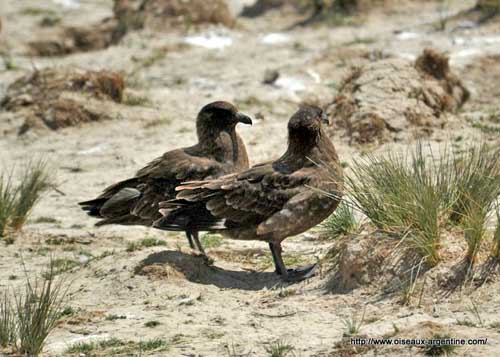
Stercorarius antarcticus
When they return to their breeding areas, they establish the territory. They carry large fat reserves and are ready to occupy the nest-site even when food sources are short. The site is strongly defended against intruders. Skuas perform swooping and dive-bombing.
Many territories are on rocky areas on the edge of the sea, and these limited available areas often involve group formation. These groups are very stable with long-term bonds, and may remain intact for several consecutive years.
They often breed in colonies but also as isolated pairs. Colonial-breeding is often the consequence of restricted nesting habitats and local abundant food sources.
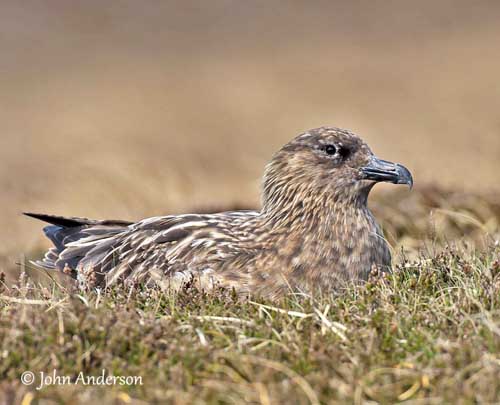
Stercorarius skua
Displays can be observed at freshwater bathing sites, within or close to the colony. The skuas drink and bathe together, while performing displays through a number of highly ritualized postures. Some fights may occur too. This behaviour could be used to maintain relationship or hierarchy between them, but this communal bathing is still unclear.
The breeding pairs meet on their territory where they re-establish the pair-bonds. They do not need elaborate courtship displays. However, some courtship behaviour can be observed. The large skuas usually display on the ground. Their utter the typical “long-call” while spreading the wings, in order to display the white wing patches.
The smaller skuas perform aerial displays, during which the elongated central rectrices follow their movements and play an important visual role.
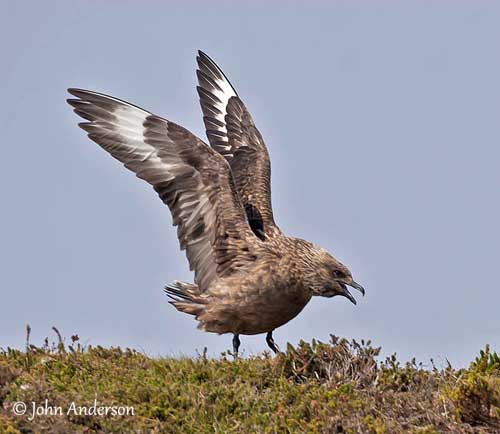
Stercorarius skua
The large skuas usually nest on islands, in grassy habitats and away from human disturbances.
The smaller skuas breed mainly on tundra.
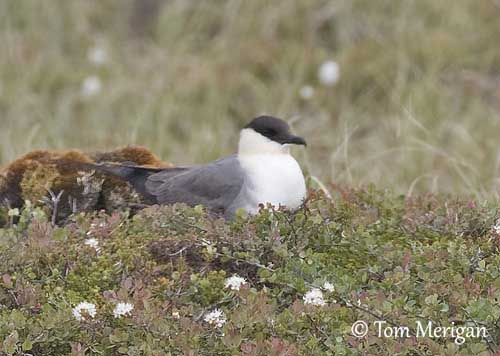
Stercorarius longicaudus
Both adults prepare the nest while displaying together. They follow circular displays and utter much squeaking. The pair selects a scrape after making several ones on the ground. The skuas have two brood patches, and incubate with one egg on each foot because there is no lining in the scrape. For this reason, skuas lay only one or two eggs. Larger clutches usually fail because the eggs do not receive sufficient warming.
The scrape is partially hidden on the ground. This is a good protection against predators such as Arctic Fox or even other skuas.
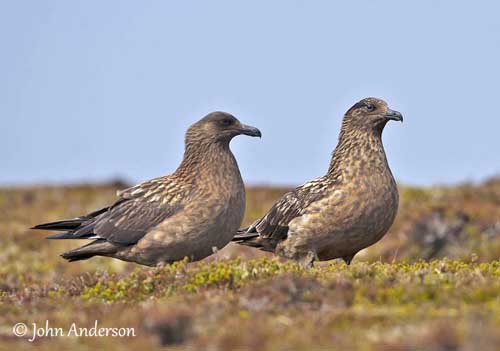
Stercorarius skua
The incubation starts with the first egg laid. In large skuas, this period lasts about 28-32 days, and 25-27 days in smaller species (24 days in the smallest Long-tailed Skua or Jaeger. If the food is lacking, the larger chick often attacks the younger one and gets much of the regurgitated food by parents, giving it a good chance of surviving.
The chick leaves the nest very soon, one or two days after hatching, and wanders some distance from the scrape. If threatened, the chick crouches motionless behind the vegetation or some rock or stone.
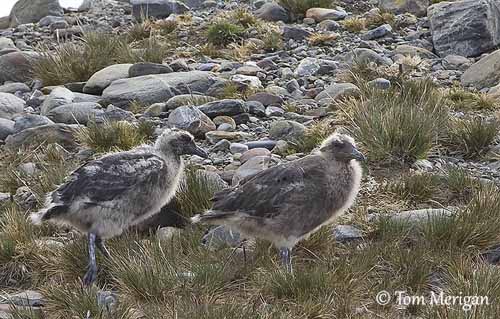
Stercorarius antarcticus
Usually, nest-defence is made by the female which is larger than male. She may use the “broken-wing” display in order to lead the predators away from the nest or the chicks. But the male provides food to the family.
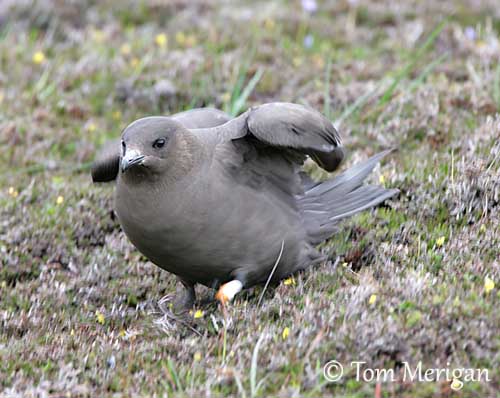
Arctic Skua or Parasitic Jaeger
Stercorarius parasiticus
They fledge 40-50 days after hatching in large skuas, and are protected by down and fat reserves for long period due to severe weather conditions during the Antarctic summer. They are short-distance migrants, and the four species leave their breeding sites later than the smaller skuas, even the South Polar Skua which migrates longer distances. They are sexually mature when they are five or six years old.
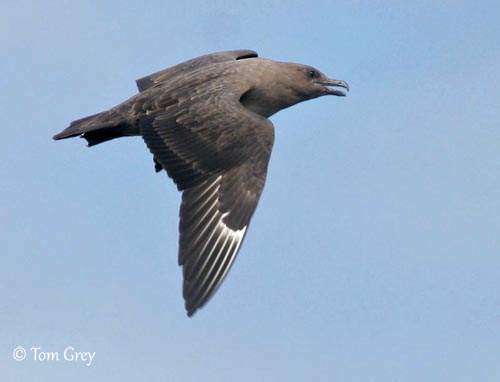
Stercorarius maccormicki
In smaller species, they fledge one month after hatching and their development is rapid, due to rather stable weather during Arctic summer. They are able to leave the breeding areas shortly after fledging. They can breed at about three years, but the Pomarine Skua or Jaeger may breed at two years, and the Arctic Skua or Parasitic Jaeger at one year of age.
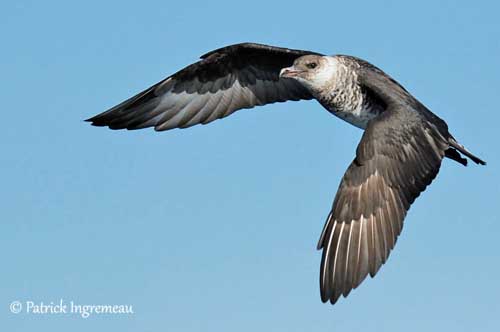
Stercorarius pomarinus
Numerous juvenile and immature birds remain in the winter area during the following summer. However, some immature skuas may move beyond the breeding area to explore.
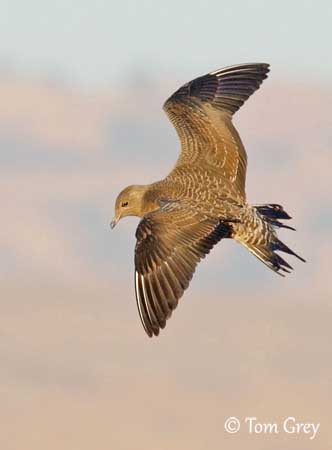
Skuas and jaegers perform powerful flight with fast wingbeats, and have well-developed ability to accelerate, allowing them to pursue other seabirds. They are very agile when they harass and chase their victims.
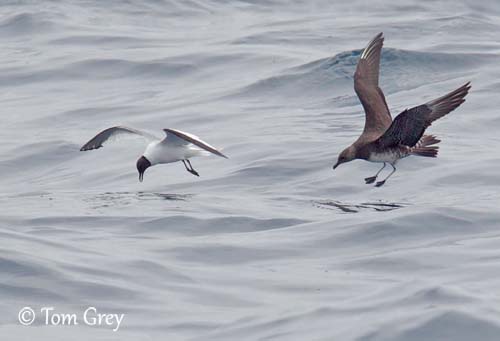
Stercorarius longicaudus
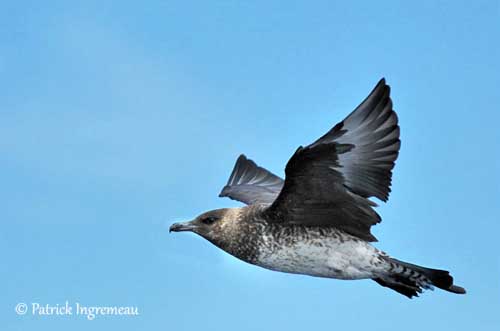
Stercorarius pomarinus
They are not very vocal, and are silent at sea. On the breeding areas, vocalisations are fairly limited.
The large skuas and the Pomarine Skua or Jaeger have a “long-call”, a series of 4-12 laughs. This call is used as advertising call or to greet the mate. The “wing-raising-display” accompanies this call.
The Arctic Skua or Parasitic Jaeger and the Long-tailed Skua or Jaeger give similar “long-call”, but with head lifted and neck stretched. Both perform noisy aerial displays.
The Great Skua gives a repeated, soft “quack” when disturbed, whereas Brown Skua and South Polar Skua utter a harsh cry while swooping at intruder. The Chilean Skua has higher-pitched and more nasal voice.
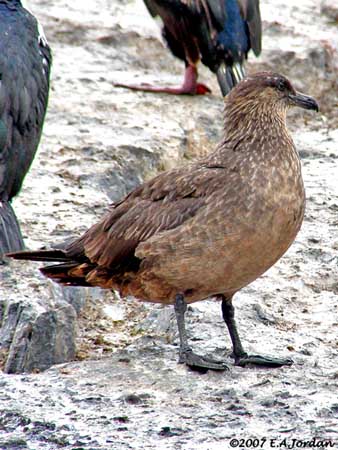
Stercorarius chilensis
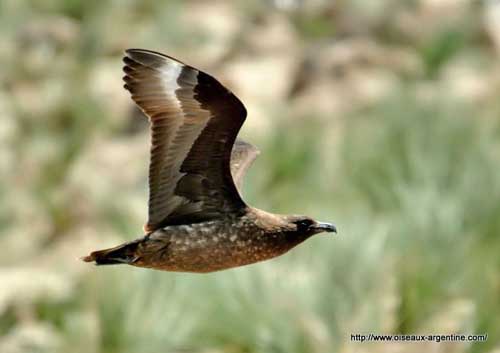
Stercorarius antarcticus
SOUNDS BY XENO-CANTO – Sharing Birds sounds from around the world
Great Skua : SOUNDS BY XENO-CANTO
Long-tailed Skua or Jaeger : SOUNDS BY XENO-CANTO
Brown Skua : SOUNDS BY XENO-CANTO
South Polar Skua : SOUNDS BY XENO-CANTO
Chilean Skua : SOUNDS BY XENO-CANTO
Arctic Skua or Parasitic Jaeger : SOUNDS BY XENO-CANTO
Pomarine Skua or Jaeger : SOUNDS BY XENO-CANTO
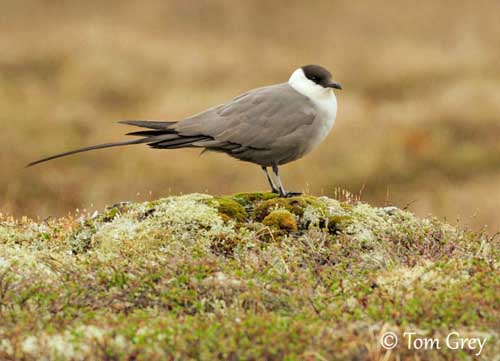
Stercorarius longicaudus
Skuas and jaegers are closely related to gulls, terns, skimmers and alcids, and they are sometimes considered an expansion of the Family Laridae from which they might have diverged about ten millions years ago. They show several differences with their piratical feeding behaviour, their predatory habits and their breeding ranges at high latitudes.
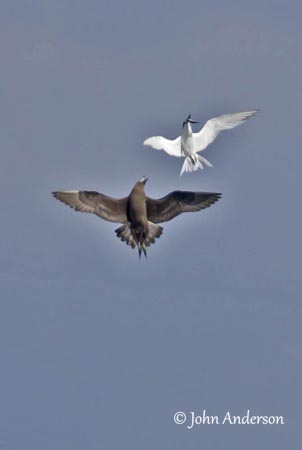
Arctic Skua or Parasitic Jaeger
Stercorarius parasiticus
In spite of several threats such as predation by mammals, oil and chemical pollution, changes to fishery practices, skua numbers appear stable or even increasing in some parts of the range. They can be considered a great conservation success. They have small populations but currently, none of the species is threatened or declining.
In addition, they breed in remote areas at high latitudes where human disturbances are very rare. However, birders and ornithologists are today very interested by these amazing birds. They are opportunistic and feed mainly from other species by harassment and piracy. They are long-lived birds too.
But we must not forget that these birds are potentially vulnerable to illegal persecution and increased disturbance.
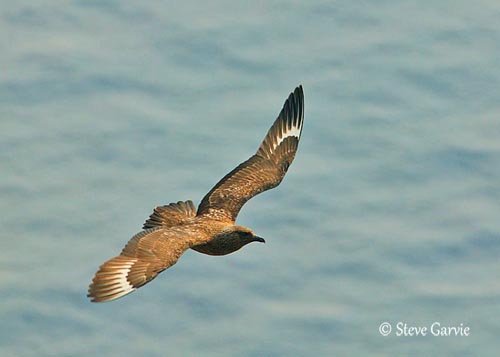
Stercorarius skua